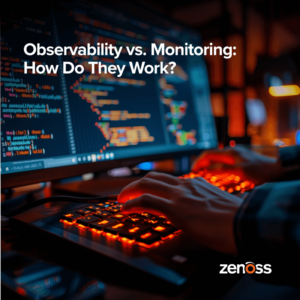
The fact of the matter is we are all human beings with our own preconceived notion of what is right and just formed over years and years of experiences. Even in the face of logic or empirical evidence, it is hard for us to overcome these experiences to come to a new conclusion. In our IT lives, think of a new switching technology, application, automation, or even Cloud. Remember the old sayings, “You can’t get fired buying Cisco (Insert Name).” Those that adapt to these new technologies and paradigms will survive and thrive, while those that do not adapt will slowly fade away.
When it comes to IT Operations Monitoring, the paradigm is stuck in an elemental construct. We monitor CPUs, processes, errors, bandwidth, synthetic transactions, applications, and more. The goal is to identify, assess, and diagnose potential issues to avoid costly downtown and improve mean time to repair (MTTR).
Today’s soup du jour is real-time monitoring or the ability to poll at sub-second intervals. While this sounds new and exciting, the reality is that it is simply elemental monitoring. The theory holds that real-time or shorter polling cycles will yield additional data and clues that will unlock the secrets to your IT infrastructure while improving MTTR and mean time between failures (MTBF).
In reality, real-time monitoring is the logical next step for elemental monitoring and I’m excited about its application. However, it simply is generating a tremendous amount of data that needs to be visualized and analyzed in a useable fashion. Additional, I firmly believe the paradigm is wrong, as we must look beyond elemental monitoring toward a services paradigm.
Why? Do you remember the old saying, “You can’t see the forest through the trees?” The only way to truly understand your IT infrastructure is through the lens of the services you provide to your internal or external customers. Furthermore, this view is critical to IT Operations, service owners, executives, customers and more.
A service paradigm requires the combination of a real-time service model with elemental monitoring and aspects of “Big Data” and business intelligence. By looking at the full impact of various elements on the service as a whole, IT Operations can better focus their attention and resources to avert or fix problems. Furthermore, technologies such as R-Analytics may be used to provide predictive analytics as well as complex dashboards that are commonplace within the financial market yet mysteriously missing from IT.
Change is hard, change is scary, but change is constant. Let’s not let our stubbornness ruin a fantastic ride!
Photo by Kerriantes







